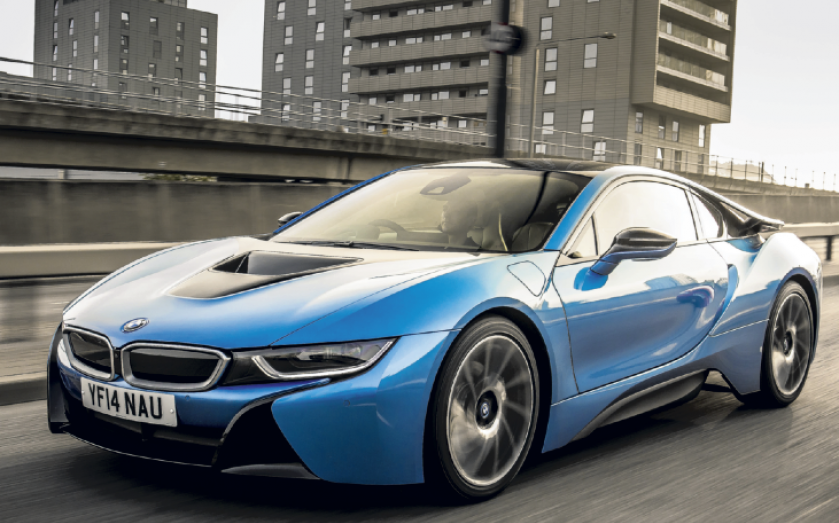Car review: The BMW i8

We'd stopped the BMW i8 alongside Loch a’ Chroisg to swap drivers and stretch our legs. A bunch of us had flown up from Farnborough that morning to Inverness, and we were heading around the top of Scotland in a crazy five-hour drive, before flying south again mid-afternoon.
Minutes later, the Land Rover Discovery that had been weaving all over the road before we scooted past, drew alongside, camera out, and shot this new BMW from every angle. It’s that sort of car.
It’s even more impressive on the road than in the pictures or even the TV ads. The i8 looks like a motor show concept, not a car you can order right now for delivery later this year – if you hurry.
Throw in the “dihedral” doors that scissor up just like those on a McLaren or Lamborghini, and the £100k price tag makes the BMW i8 looks like a supercar bargain. To put that into perspective, that’s half the price of the British and Italian monsters.
So what’s going on? Where’s the catch? Well, the i8 has 360 horsepower, which is regular Porsche 911 territory rather than the 650hp of the McLaren. But to its credit, the BMW is a plug-in hybrid, which means the minimum benefit-in-kind company car tax applies, and you can drive in the City without paying the congestion charge.
Incredibly, that kind Mr Osborne also gives you a five-grand bung on the list price of the BMW i8 because it’s so clean. The i8 will cover 20 miles on battery power alone.
BMW’s trick is to combine a rather unassuming 1.5-litre, three-cylinder engine with a powerful electric motor whose batteries are charged up at home or at the roadside, then get replenished as you drive. The petrol engine is similar to that in the latest Minis, though here it is turbocharged to 231hp, with the electric motor making up the rest.
The driving belies the bare facts. The i8 is supremely quick when you want it to be and, through some clever engineering, produces an engine sound that’s more muscle car than Mini. It scythes through the winding Highland roads like a proper sports car too, even if it doesn’t have the visceral edge of a similarly priced Porsche.
To keep the weight in check – weight is always an issue where batteries are involved – the BMW i8 has an aluminium chassis with a carbon composite passenger compartment bolted on. The result is a strong, presumably very safe structure that, somewhat surprisingly, has a couple of small rear seats.
It’s not immediately obvious how everything fits in place, because behind those four seats is the engine and then the boot. Not that there’s a great deal of luggage space, which is where those rear seats come in. Still, the BMW i8 is far more practical than a similarly-priced Audi R8.
It’s reasonably comfortable inside, once you fall in over the wide door sills into the thin, shapely seats. It feels like a quality car, something you’d expect from a BMW but so often is missing from hybrids where the drive to save weight often results in rattly, hard plastics.
I admit to being completely bowled over by the BMW i8. I love the design and the way it drives. It’s easy to buy into the technology too, mainly because all supercar manufacturers simply have to do more than pay lip service to environmental concerns. The BMW i8 looks and feels like a car from the future. But it’s here, right now, and it’s simply awesome.